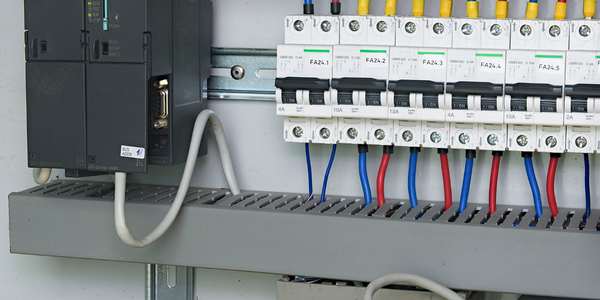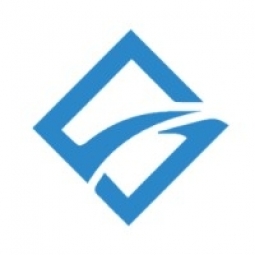公司规模
Large Corporate
地区
- America
国家
- United States
产品
- FreightPOP's TMS platform
技术栈
- Oracle
实施规模
- Enterprise-wide Deployment
影响指标
- Cost Savings
- Productivity Improvements
技术
- 平台即服务 (PaaS) - 连接平台
适用行业
- 电子产品
适用功能
- 物流运输
用例
- 供应链可见性(SCV)
- 车队管理
服务
- 云规划/设计/实施服务
关于客户
Kyocera is a leading consumer and business-to-business electronics provider. The company manages a complex supply chain and distribution network. Its U.S. document solutions subsidiary, Kyocera Document Solutions America (KDA), was specifically looking for ways to streamline its shipping management processes. KDA operates five facilities, including three regional distribution hubs, a parts distribution center, and a national returns center. The company's Director of Logistics, Christian Mannino, was leading the search for a solution to streamline the shipping and booking processes.
挑战
Kyocera Document Solutions America (KDA), a subsidiary of Kyocera, was looking for ways to streamline its shipping management processes. The company manages a complex supply chain and distribution network, and the manual shipping and booking processes were proving to be tedious and inefficient. Christian Mannino, KDA's Director of Logistics, was leading the search for a solution. He oversees five facilities, including three regional distribution hubs, a parts distribution center, and a national returns center. The company needed a Transportation Management System (TMS) that could manage the entire freight lifecycle across all five facilities. The TMS needed to integrate with Oracle, centralize the rating and booking of parcel and freight shipments, provide detailed tracking of shipments, offer transparent pricing, and be easy to use.
解决方案
FreightPOP provided KDA with a cloud-based TMS platform that met all their requirements. The platform integrated with their business tools, including Oracle, and over 300+ carriers. It offered comprehensive freight tracking and data capture with customizable dashboards. The pricing was straightforward and specific for any business shipping need. The platform was user-friendly and did not require extensive training for the users. The interface was flexible and could be configured to highlight the most relevant tools and performance metrics for KDA. The detailed tracking feature of FreightPOP allowed KDA to track and quantify their shipping volume in precise detail, which was beneficial for day-to-day operations and carrier negotiations.
运营影响

Case Study missing?
Start adding your own!
Register with your work email and create a new case study profile for your business.
相关案例.

Case Study
Remote Temperature Monitoring of Perishable Goods Saves Money
RMONI was facing temperature monitoring challenges in a cold chain business. A cold chain must be established and maintained to ensure goods have been properly refrigerated during every step of the process, making temperature monitoring a critical business function. Manual registration practice can be very costly, labor intensive and prone to mistakes.

Case Study
Predictive maintenance in Schneider Electric
Schneider Electric Le Vaudreuil factory in France is recognized by the World Economic Forum as one of the world’s top nine most advanced “lighthouse” sites, applying Fourth Industrial Revolution technologies at large scale. It was experiencing machine-health and unplanned downtime issues on a critical machine within their manufacturing process. They were looking for a solution that could easily leverage existing machine data feeds, be used by machine operators without requiring complex setup or extensive training, and with a fast return on investment.

Case Study
Cloud Solution for Energy Management Platform-Schneider Electric
Schneider Electric required a cloud solution for its energy management platform to manage high computational operations, which were essential for catering to client requirements. As the business involves storage and analysis of huge amounts of data, the company also needed a convenient and scalable storage solution to facilitate operations efficiently.

Case Study
Leveraging the IoT to Gain a Competitive Edge in International Competition
Many large manufacturers in and outside Japan are competing for larger market share in the same space, expecting a growing demand for projectors in the areas of entertainment, which requires glamor and strong visual performance as well as digital signage that can attract people’s attention. “It is becoming more and more difficult to differentiate ourselves with stand-alone hardware products,” says Kazuyuki Kitagawa, Director of Service & Support at Panasonic AVC Networks. “In order for Panasonic to grow market share and overall business, it is essential for us to develop solutions that deliver significant added value.” Panasonic believes projection failure and quality deterioration should never happen. This is what and has driven them to make their projectors IoT-enabled. More specifically, Panasonic has developed a system that collects data from projectors, visualizes detailed operational statuses, and predicts issues and address them before failure occurs. Their projectors are embedded with a variety of sensors that measure power supply, voltage, video input/ output signals, intake/exhaust air temperatures, cooling fan operations, and light bulb operating time. These sensors have been used to make the projector more intelligent, automatically suspending operation when the temperature rises excessively, and automatically switching light bulbs. Although this was a great first step, Panasonic projectors were still not equipped with any capability to send the data over a network.









